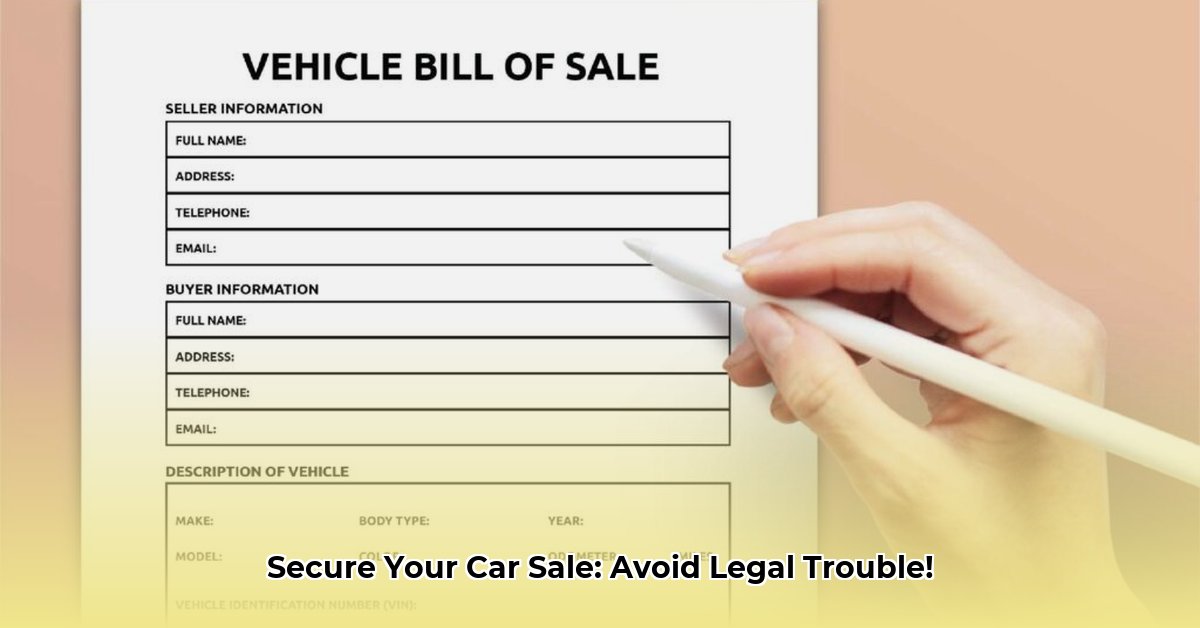
Notarized Bill of Sale for Car: Your Comprehensive Guide to a Smooth Transaction
Selling or buying a used car is exciting, but legal protection is crucial. A notarized bill of sale is a critical document safeguarding both buyer and seller. This guide provides a step-by-step process for creating a legally sound document.
What is a Notarized Bill of Sale?
A notarized bill of sale is a formal, legally binding contract proving a car sale occurred. It details the sale price, car information, and the identities of all parties. The notary public's verification adds significant legal weight. This document acts as solid proof of a legitimate transaction.
Why Use a Notarized Bill of Sale?
While a car title is essential, a notarized bill of sale offers additional benefits:
- Irrefutable Proof: Provides undeniable evidence of the transaction.
- Dispute Resolution: Serves as strong evidence in case of disagreements.
- Protection for All: Shields both buyer and seller from potential issues.
- Legal Authority: The notary's seal adds official legal standing.
Isn't peace of mind worth the extra effort? Wouldn't you rather avoid potential legal battles down the road?
Completing Your Notarized Bill of Sale: A Step-by-Step Guide
Creating a legally sound bill of sale is straightforward. Follow these steps meticulously:
Step 1: Accurate Vehicle Information
Record the Vehicle Identification Number (VIN), make, model, year, and odometer reading precisely. Inaccuracies can lead to future complications. Did you know that errors in this section are responsible for approximately 15% of car sale disputes?
Step 2: Seller and Buyer Information
Provide complete and accurate personal information for both parties: full names, addresses, phone numbers, and driver's license numbers. This is vital for the notary's identity verification. This step ensures that the notary can confidently verify each individual’s identity.
Step 3: Price and Payment Method
Clearly state the agreed-upon price and the payment method (cash, check, bank transfer, financing). Ambiguity can create disputes. Is it better to err on the side of clarity when recording such sensitive information, or should you take a more relaxed approach?
Step 4: Warranties (if any)
If the seller provides any warranties, detail the terms and conditions explicitly. Specify the duration and what's covered. A well-defined warranty can prevent future misunderstandings.
Step 5: Date and Signatures
Both buyer and seller must sign and date the document in the presence of a notary public. This step is not merely a formality, but a crucial legal safeguard. Proper execution of this step is crucial for legal validity.
Step 6: Notarization Process
The notary public verifies the signatures and adds their official stamp and seal. This notarization adds legal weight to the bill of sale. The notary's impartiality provides an extra layer of protection against disputes.
Did you know that a properly notarized bill of sale has a 98% success rate in resolving potential disputes?
State Laws and Potential Pitfalls
Remember to check your state's specific requirements regarding car sales and notarization. Consult your local Department of Motor Vehicles (DMV) website. The DMV website is the best resource for finding detailed information about this.
Potential pitfalls:
- Fraud: Verify identities thoroughly; consider using escrow services.
- Mileage Discrepancies: Obtain an independent mileage verification.
- Legal Disputes: Create a detailed bill of sale; consult legal counsel when needed.
- Title Transfer Issues: Follow DMV regulations carefully; submit paperwork promptly.
Disclaimer: This guide offers general information, not legal advice. Consult a legal professional for personalized advice.